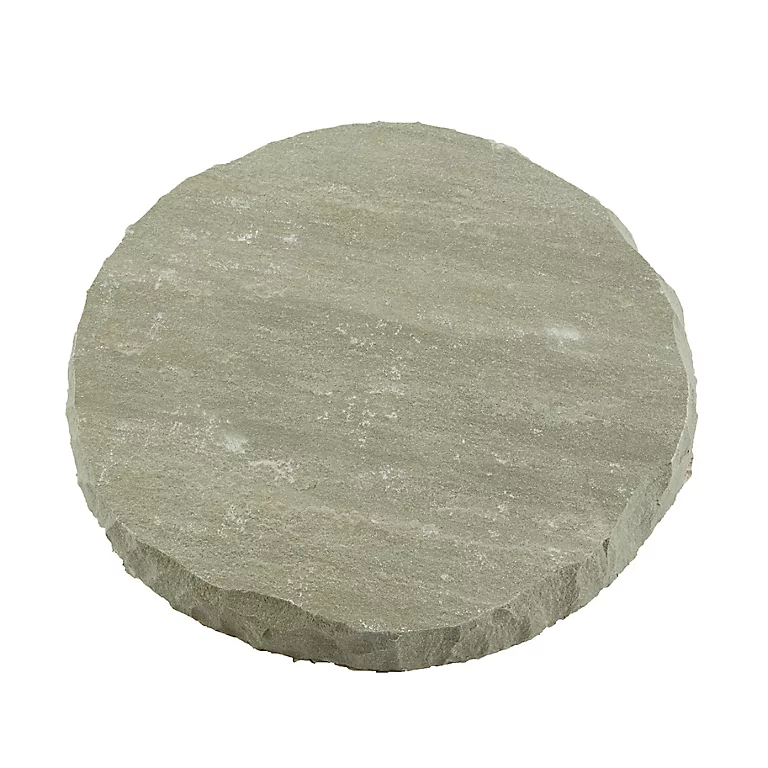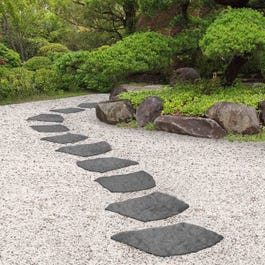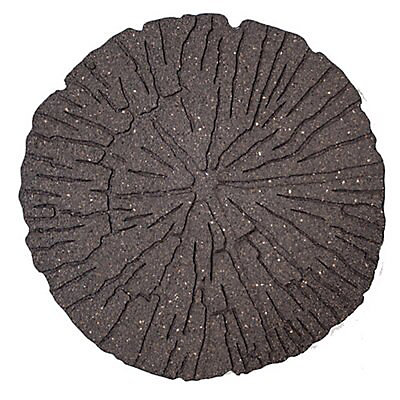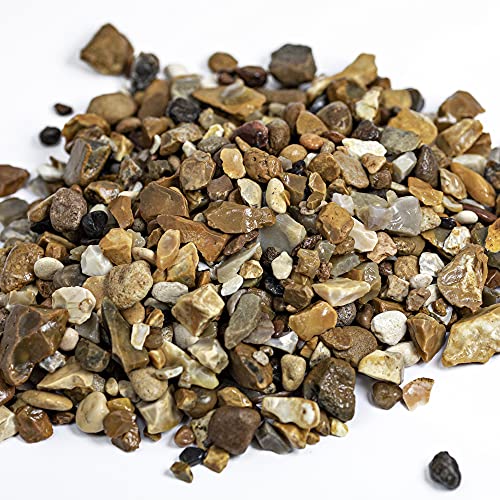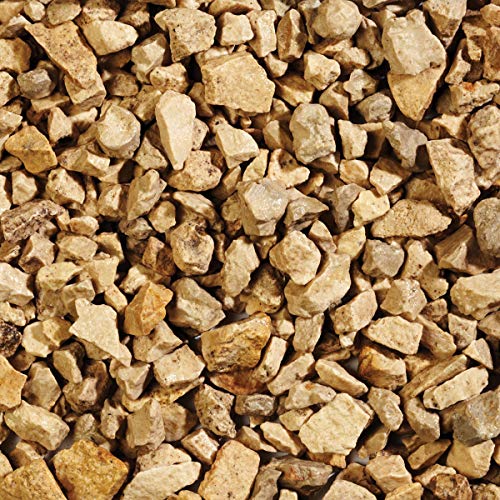15 garden path ideas to enhance your outdoor space – inspiration for every budget
Let these garden path ideas inspire stylish and functional walkways
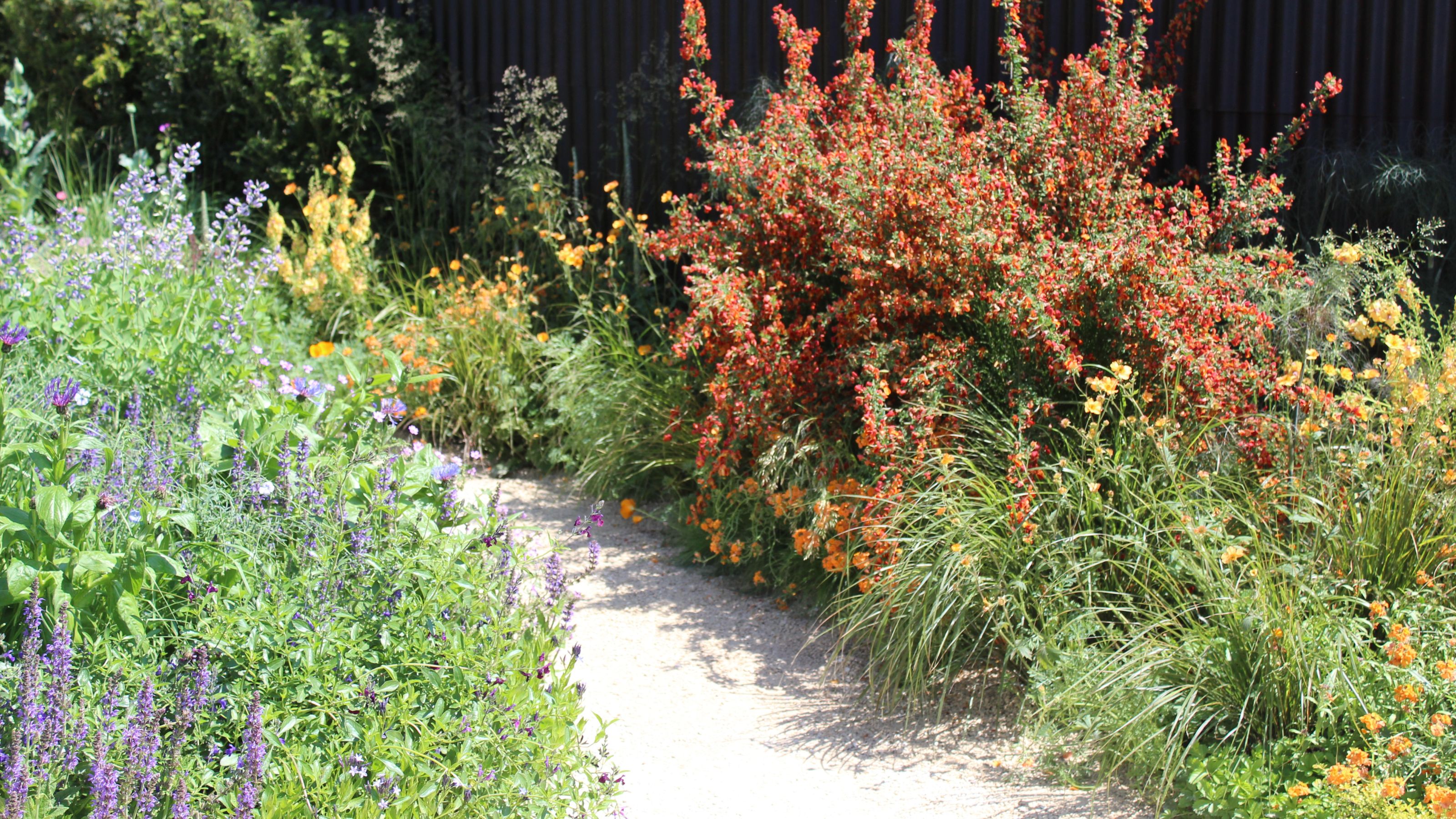
- 1. Add stepping stones
- 2. Go for gravel on a budget
- 3. Frame with ground cover plants
- 4. Line with planters
- 5. Pave your path
- 6. Interrupt your route with a water feature
- 7. Step up to slate
- 8. Set slabs in gravel for an inexpensive, modern look
- 9. Mimic a river bed
- 10. Use reclaimed red brick
- 11. Draw the eye with an arch
- 12. Create a cottage garden feel with cobbles
- 13. Go back to nature with wood
- 14. Deck a route through
- 15. Lay bricks that meander to your door
- FAQs

Sophie King
All of the best garden path ideas combine style and function, and whether you're looking to carve a route from one end of the garden to another or provide a walkway around a focal point, there are various ways to tick both boxes.
Garden paths can lend a hand to many of our favourite garden ideas, enabling access to centrepieces and zoning areas of outdoor space. Many landscaping ideas rely on beautiful paths to connect different areas of your garden.
'Garden paths are a key element of any outdoor space, providing a practical and aesthetic link between different areas of your garden,' says Georgina Read, director at Paving Superstore. 'In recent years, there has been a surge of interest in creating modern garden paths that are both functional and visually striking.'
From stepping stones to wood and gravel, we've compiled a list of standout garden path ideas with tips from the experts.
Garden path ideas
Garden paths aren't just functional – they can also provide long-term value. 'Well-designed paths can enhance the overall look of your garden, potentially increasing property value,' says Holly Jones, sales and marketing manager at Garden Street.
Whether it's a route to your front door, a walkway that meanders around your back garden, or a destination path that leads to a particular spot, our garden path ideas are here to help you enhance your outdoor space.

Georgina Read has a background in e-commerce and trained as a garden designer following a career change because she was frustrated by the lack of accessibility to good-quality paving and landscaping materials. Paving Superstore began with Georgina setting up the website in 2007. It's now widely recognised as the home of great paving from leading brands. Georgina also offers a specialist trade programme, offering additional benefits to trade customers.
1. Add stepping stones
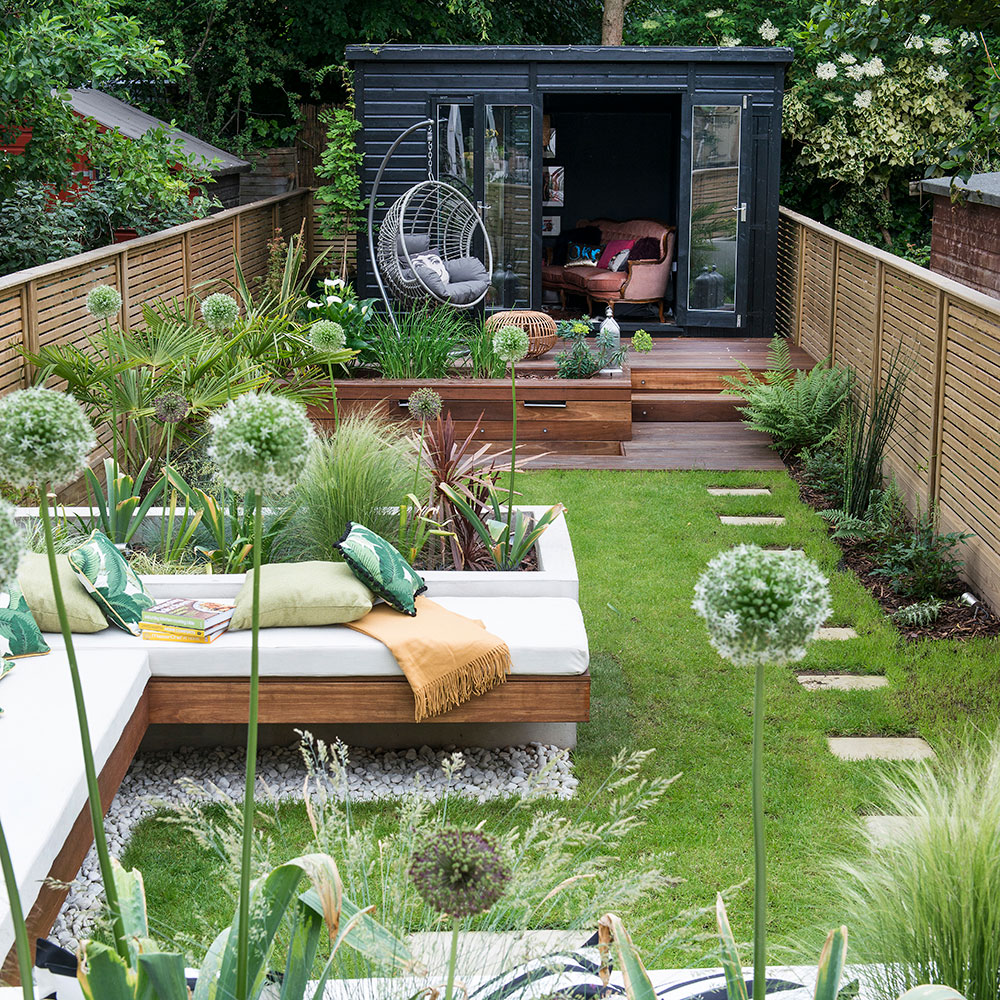
If lawn makes up a large area of your garden, consider laying stepping stones. Not only do they look stylish, but they'll also carve out a clear path and keep your grass from being trampled on.
Get the Ideal Home Newsletter
Sign up to our newsletter for style and decor inspiration, house makeovers, project advice and more.
When it comes to choosing which stepping stones will suit your garden, there are a couple of factors to consider. 'Opt for durable materials such as natural stone, slate, or concrete that can withstand the UK's varied weather conditions,' advises Holly from Garden Street. 'Choose stones that are large enough to comfortably step on, with a surface that isn’t too slippery when wet.
'Match the stones to your garden’s aesthetic – rustic stones for a cottage garden, and sleek pavers for a modern look.'

Holly is the sales and marketing manager at Garden Street, a leading online retailer specialising in outdoor living products. Passionate about enhancing outdoor spaces, Holly focuses on curating a diverse range of high-quality products that inspire customers to create beautiful and functional gardens and outdoor areas. Her insights into garden aesthetics and functionality make her a valuable voice in creating inspiring outdoor spaces.
2. Go for gravel on a budget
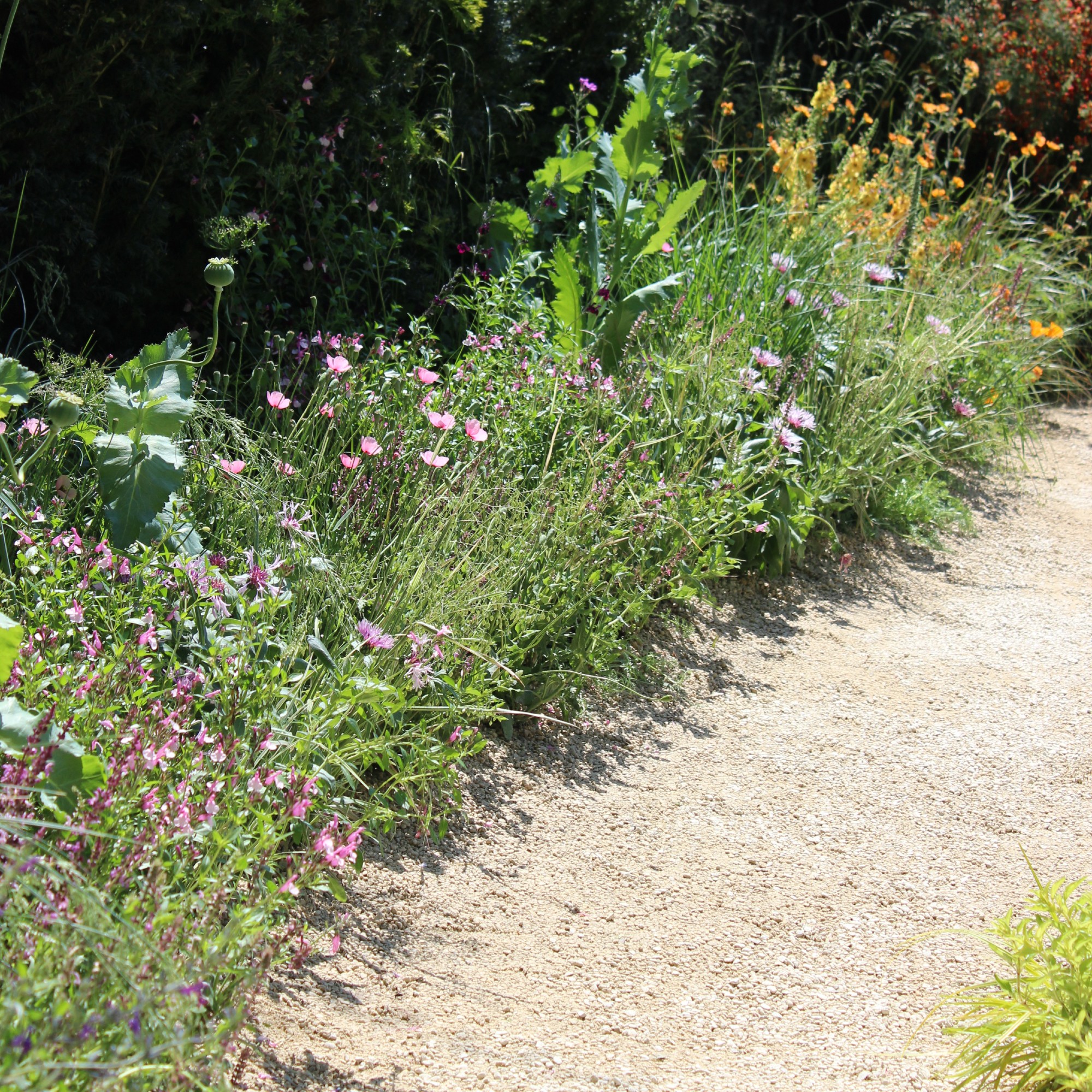
Gravel is a more cost-effective option if you're looking for garden path ideas on a budget.
Available in a wide range of colours and materials, gravel will suit any outdoor space. Plus, it's an easy way to create paths that zone areas of the garden. 'The contrasts not only add visual interest but also create distinct areas for relaxation, dining and plantings,' says Murray Michel, gardening maintenance and decking expert at Clear Amber.
Plus, the sound it makes underfoot is rather satisfying, and also offers security, as you'll always hear approaching visitors.
3. Frame with ground cover plants
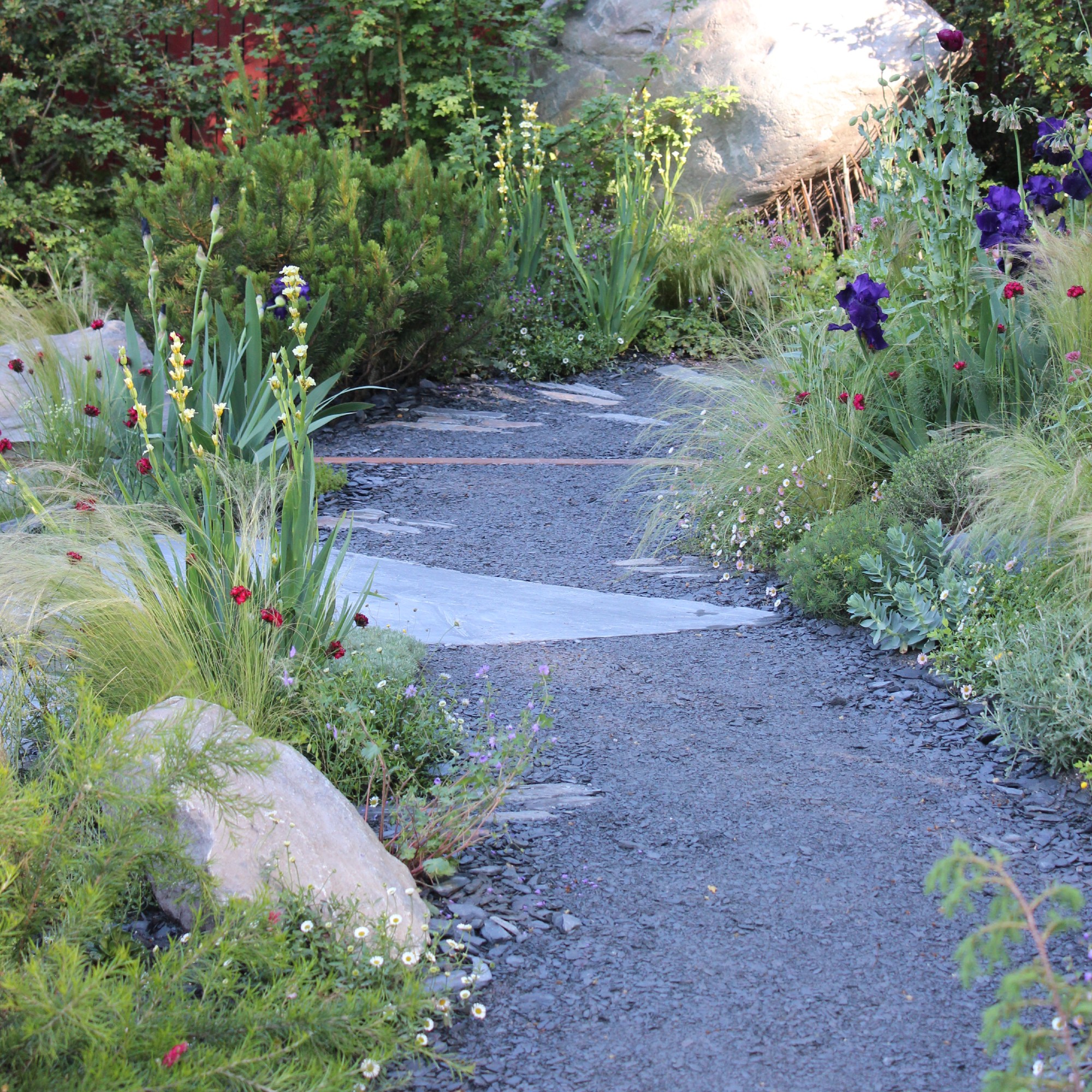
Ground cover plants make great natural garden edging ideas and can be used in tandem with your garden path ideas.
Not only is there a whole list of the best ground cover plants that prevent weeds to choose from, but there's also a wide variety of colours and textures to suit every space. You might opt for the vibrant foliage of heucheras for year-round interest, or go floral with lesser periwinkle and hardy geraniums.
Plus, choosing fragrant plants like creeping thyme from Amazon can transform your garden paths into a sensory area.
4. Line with planters
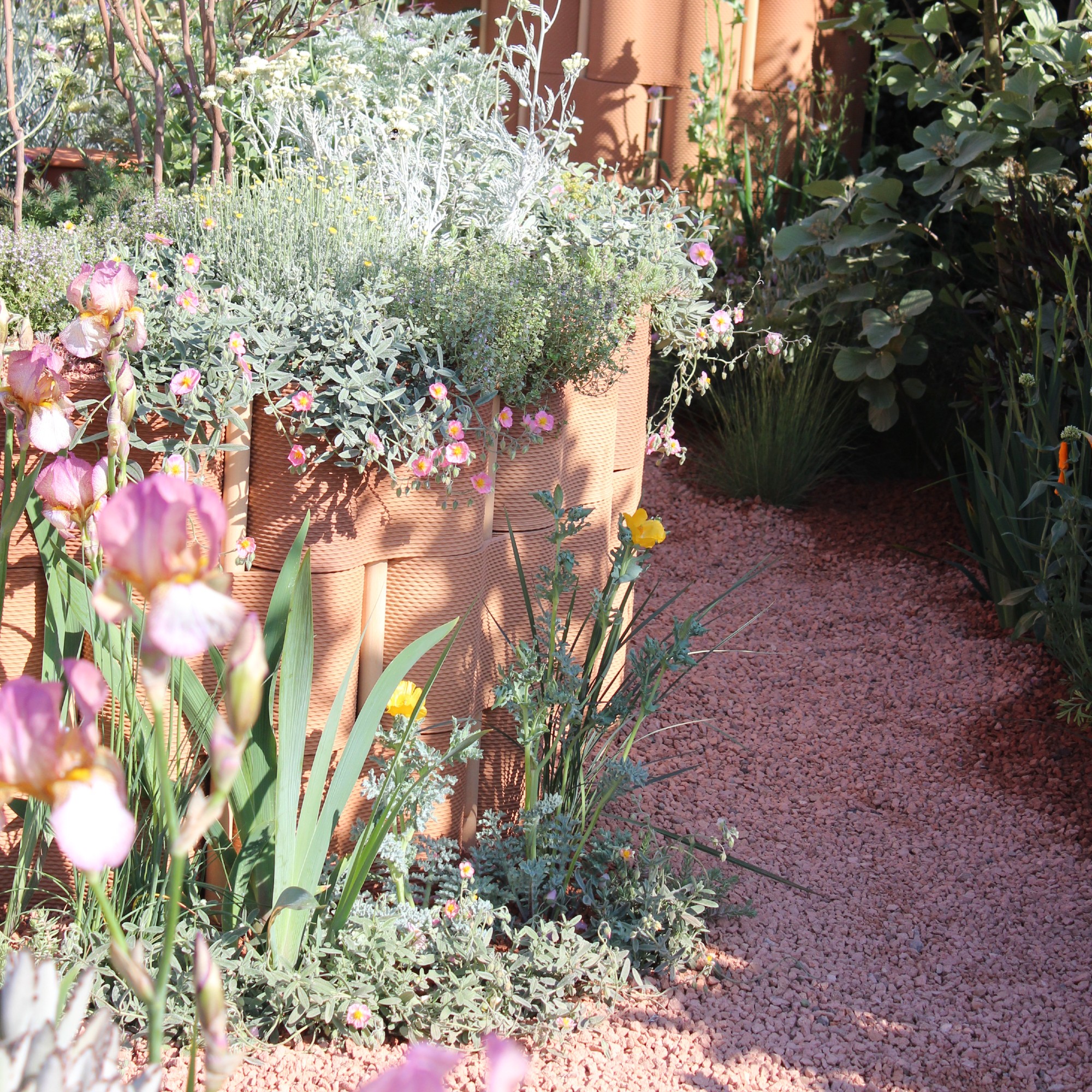
If you want to edge your garden path, consider using planters for added visual appeal.
'Place planters symmetrically along the path edges to create a balanced and formal look,' suggests Holly from Garden Street. 'Use a mix of heights, shapes, and colours in planters to add visual interest and depth to the path's edges. Change plants seasonally to keep the path vibrant and attractive year-round.'
Plus, if you're on a budget, there are a range of upcycled planter ideas to choose from.
5. Pave your path

In this multi-level plot, paving stabs are used to create both paths and wider seating areas for a modern, cohesive look. It's one of many patio ideas that works well with a garden path.
'Limestone or sandstone are stylish yet affordable path options for most gardens, and porcelain is available at very competitive prices,' says Georgina from Paving Superstore. 'If you have a little more wiggle room in your budget, why not opt for beautiful sawn sandstone or large format paving in porcelain to make your garden feel even more high-end.'
6. Interrupt your route with a water feature
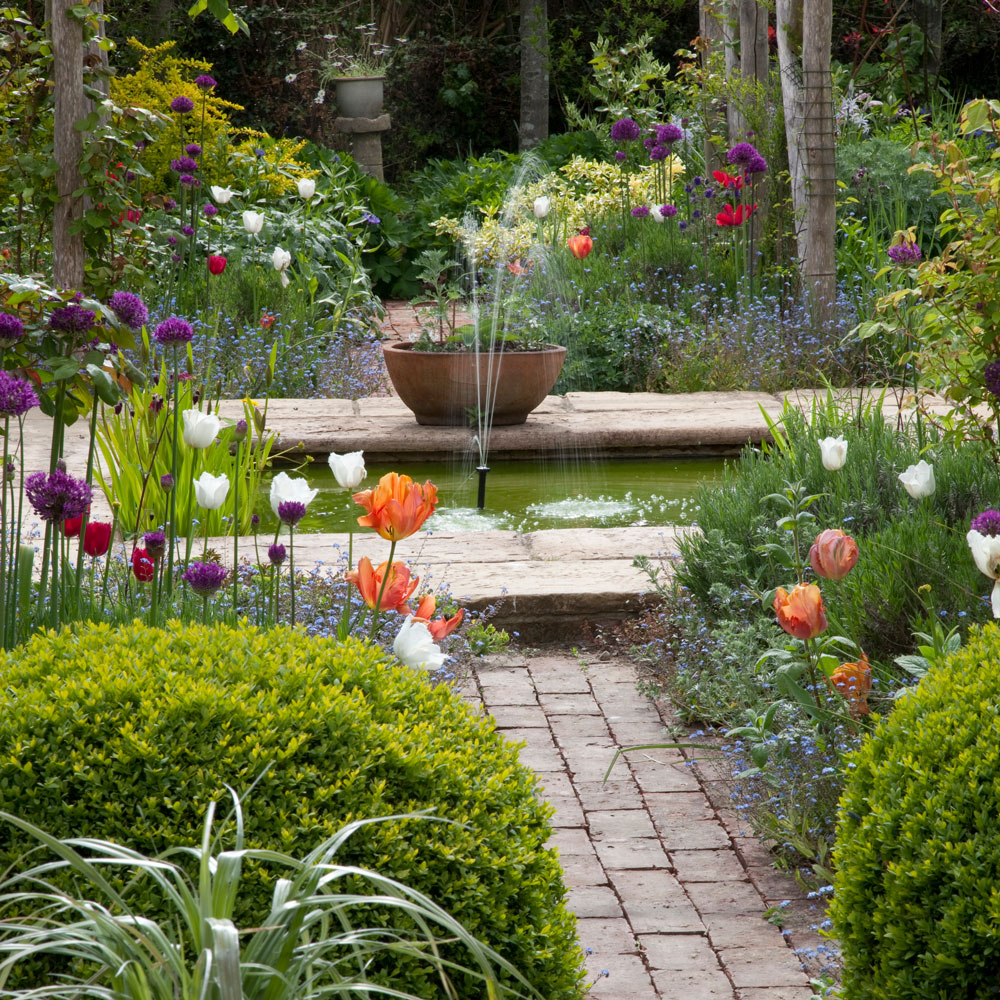
Whether you have a small pond or a classic fountain, water feature ideas can add a touch of tranquillity to your space.
Here, a pretty brick path leads up to a charming water feature, which can be framed by larger stone slabs, before the path resumes again. This creates continuity while breaking up areas into smaller pockets of interest. It's especially effective in making a larger garden feel cosier and more magical.
7. Step up to slate
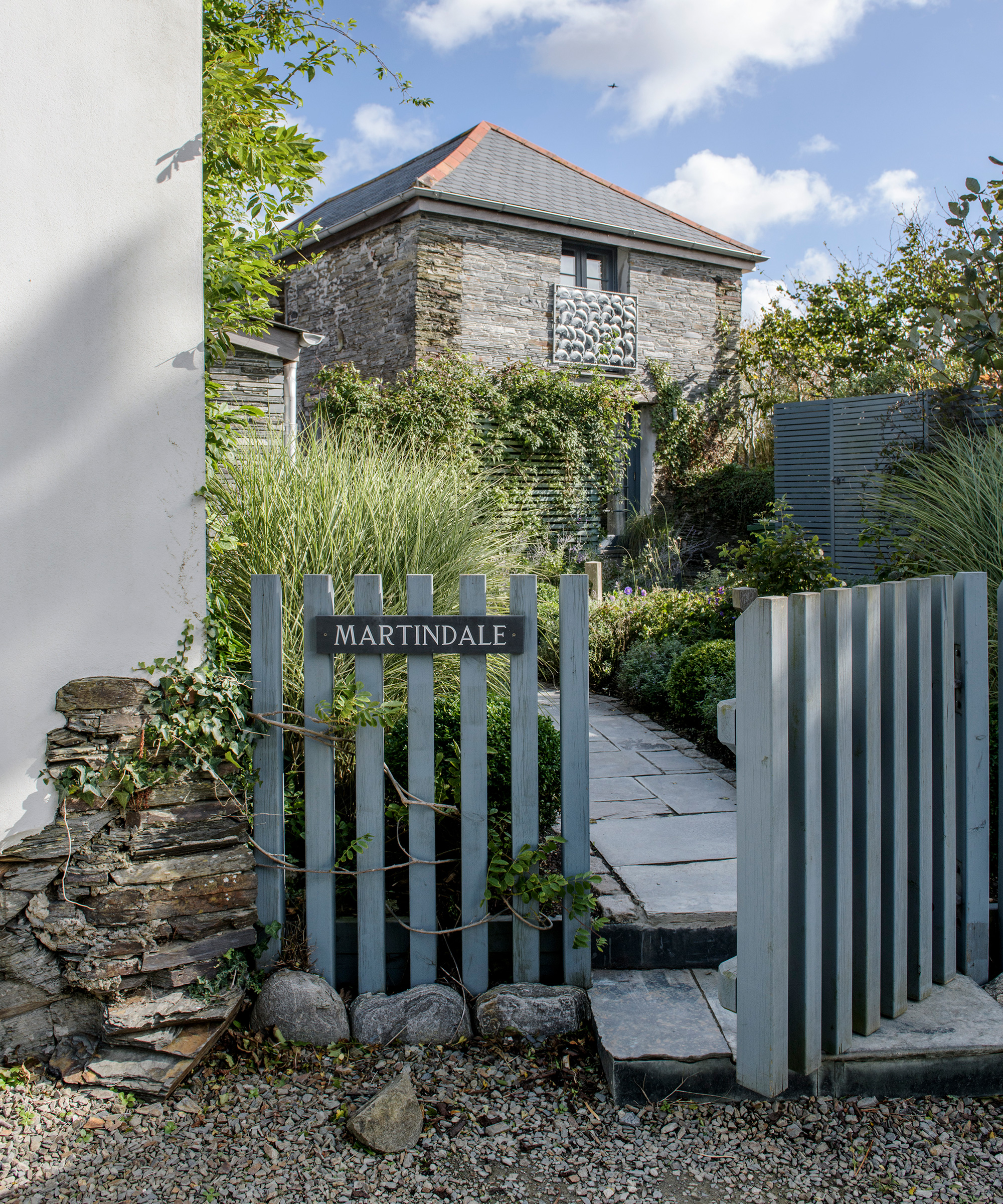
Slate is an effortlessly chic material choice for your garden path, and works just as well in urban, rural or coastal locations. Its silvery tones are modern yet rustic and look great with greenery and grey or blue paintwork.
See our garden fence ideas for more inspired pathway pairings.
8. Set slabs in gravel for an inexpensive, modern look
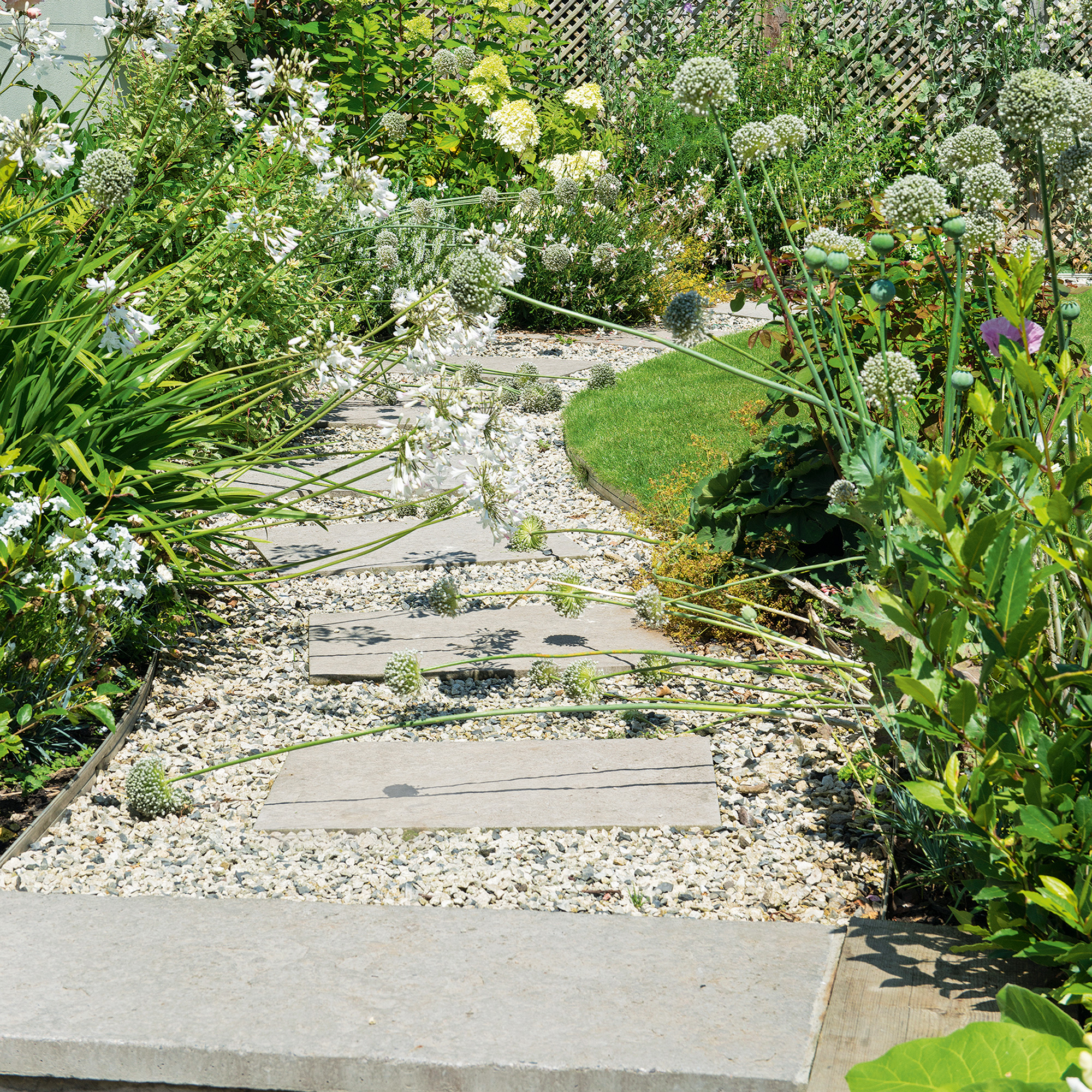
If you already have gravel paths but want to change up the look, consider adding paving slabs.
'Paving slabs are a great way to make your garden look more luxurious,' says Georgina from Paving Superstore. However, they can be expensive, which is why she has a neat trick for those on a budget. 'To save money on laying a slabbed path, use slabs intermittently with a complementary coloured pea gravel to fill the remaining areas.'
9. Mimic a river bed
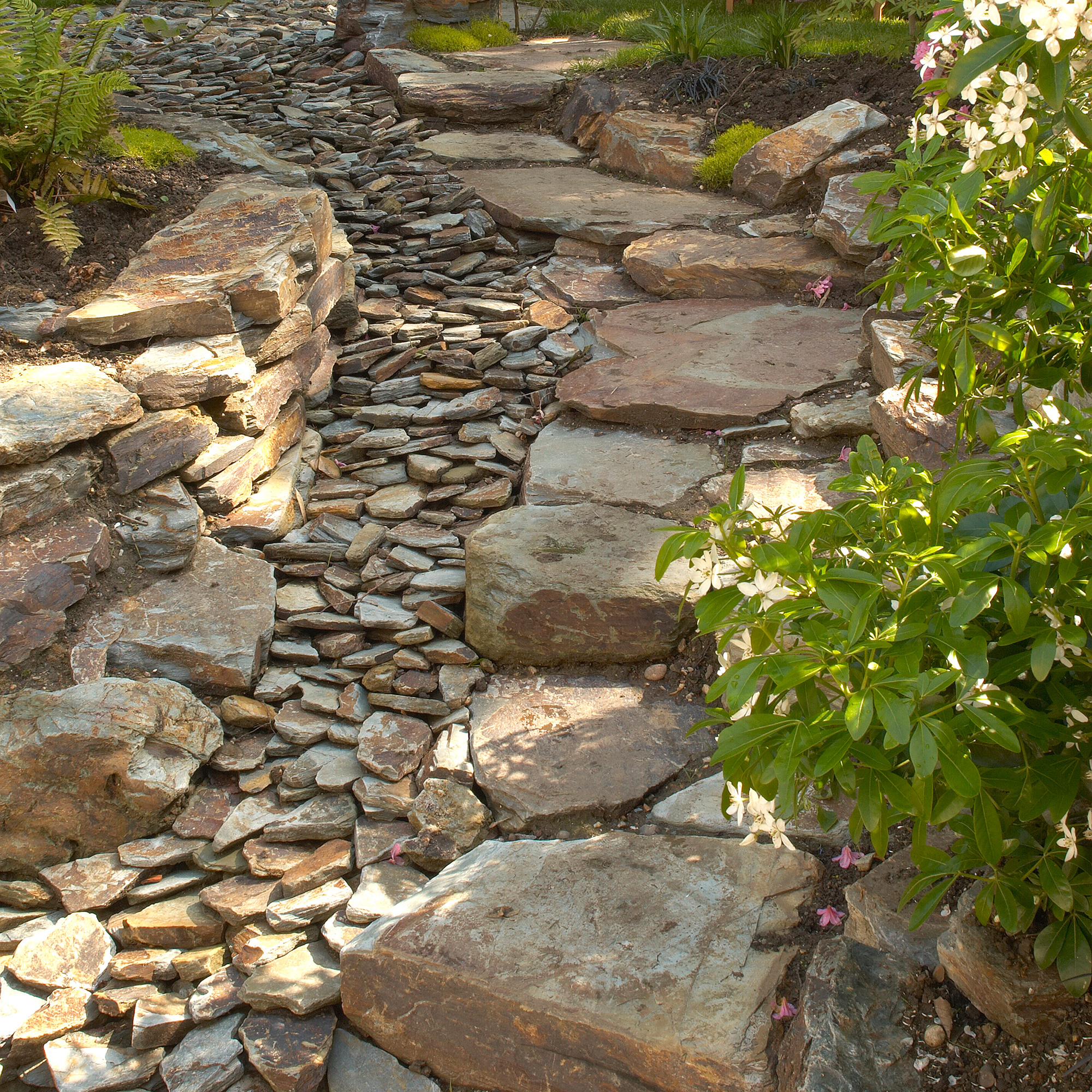
Sloped gardens can present challenges where paths are concerned, particularly when it comes to creating a very natural-looking walkway. So, look to nature for a little help. In this garden, the owner has created the feel of a riverbed using rocks of of different sizes. Use large, flat slabs as safe steps on one side of your 'bank'.
10. Use reclaimed red brick
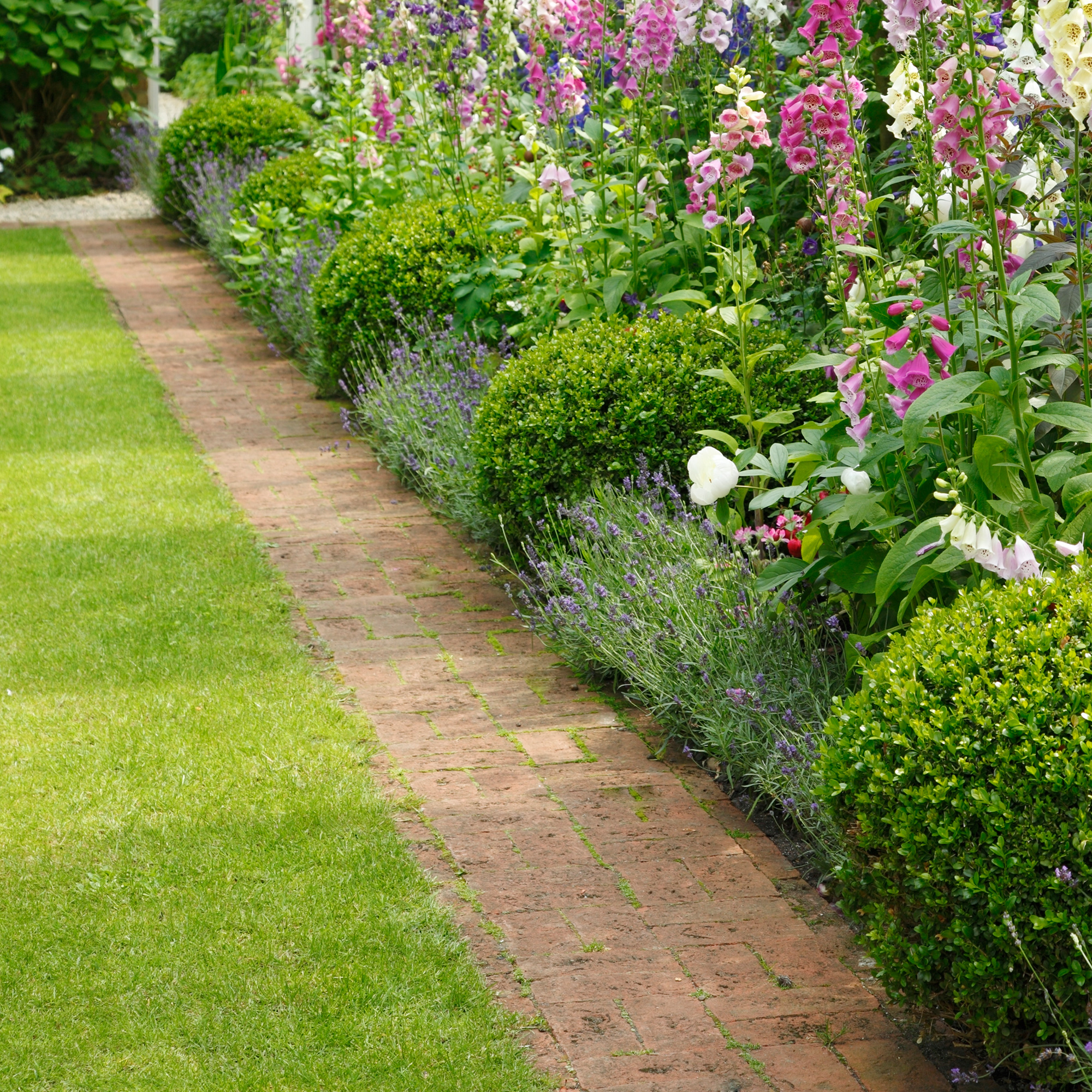
Reclaimed house bricks make a characterful garden path, and are good way to ensure your walkway coordinates with the exterior of your home. They are also a relatively affordable option, available second-hand at low prices. We've found them on eBay for 80p a brick, but you may be able to get them for less on sites like Gumtree or Facebook Marketplace.
11. Draw the eye with an arch
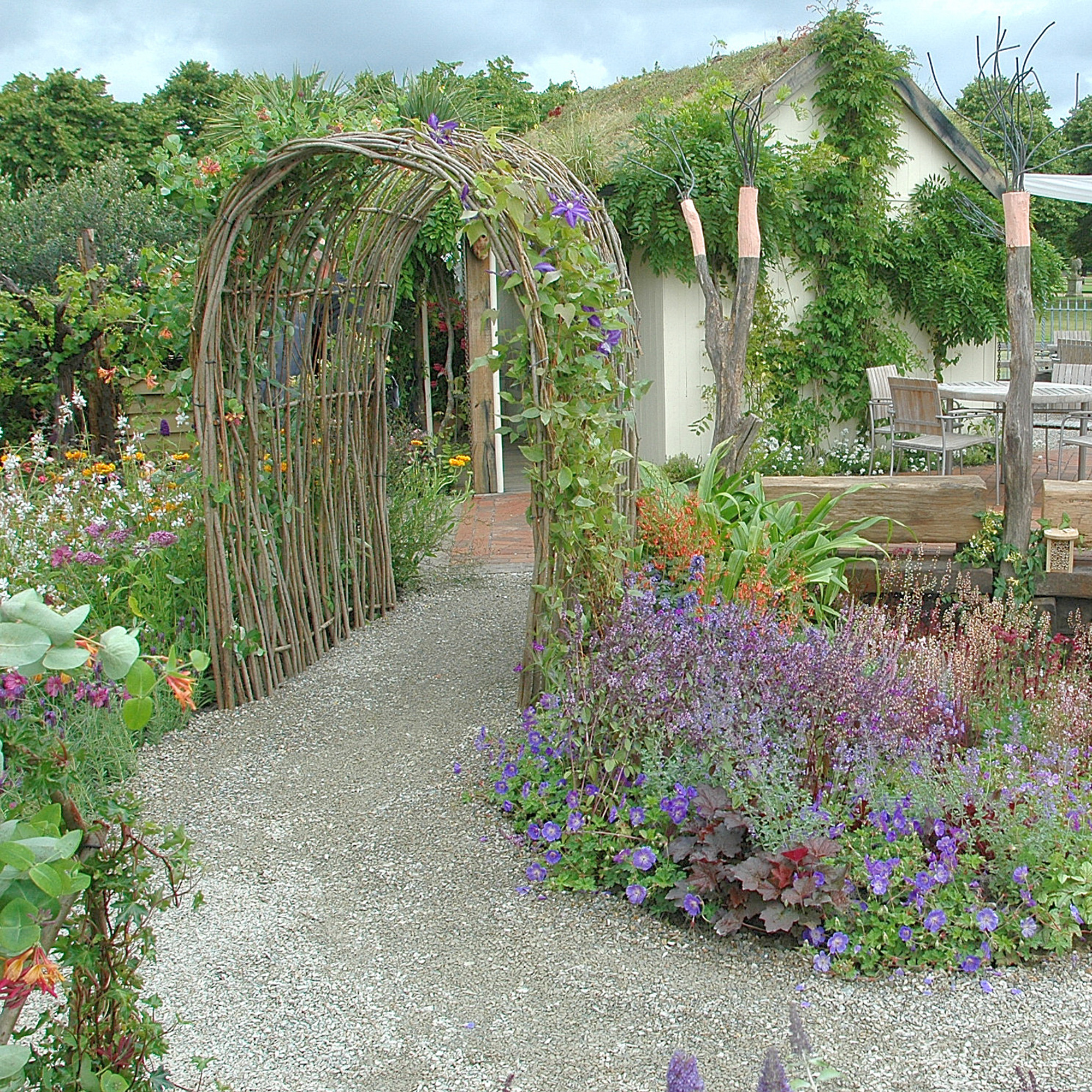
A winding path can make a small, one-level plot feel much more exciting. Use extra features, like this woven archway, to draw the eye up and onwards through the garden journey.
To make this feature even more beautiful, learn how to train wisteria along the arch, or try out other fast-growing climbing plants for speedy results.
12. Create a cottage garden feel with cobbles
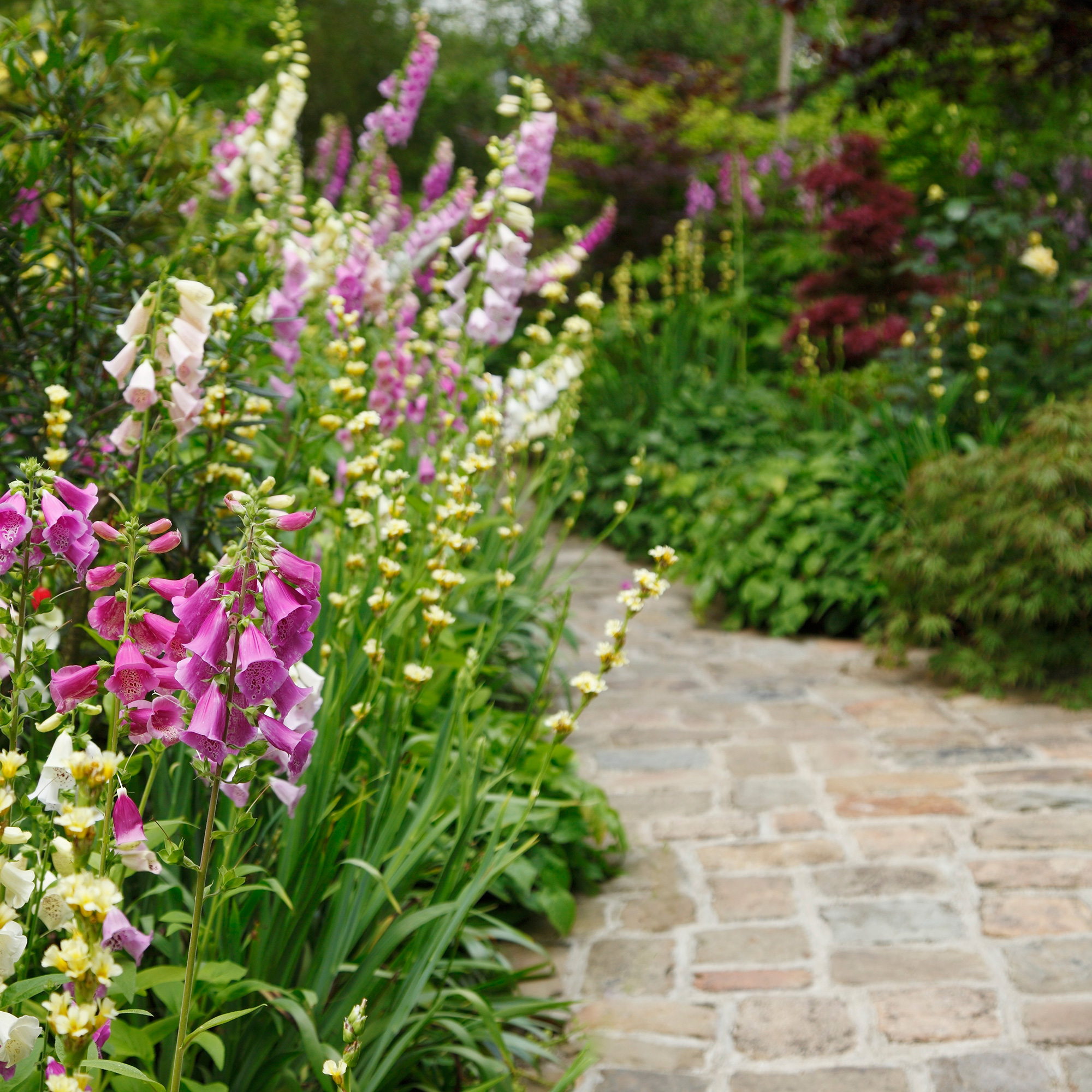
A traditional, pale, cobble-stone effect pathway like this one looks charming in a country cottage-style garden. Tall, wild flowers overspilling onto the path will surround you with the scents and sounds of nature and give your garden an enchanting feel.
13. Go back to nature with wood
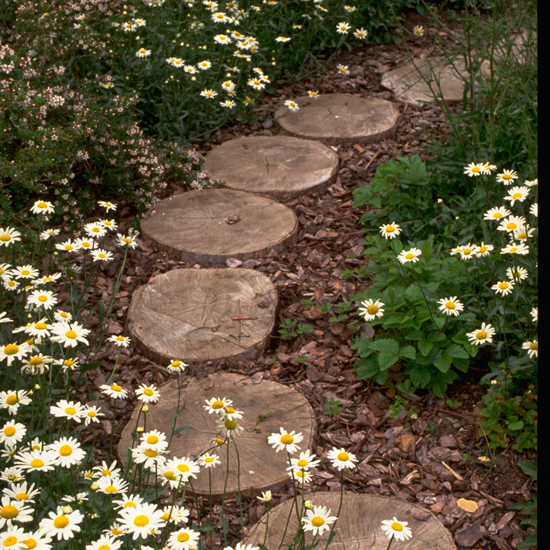
A wooden path is a subtle way of adding a rustic style to your garden. These stepping stones have been surrounded by wood chips to fill in the gaps and add to the organic feel.
14. Deck a route through
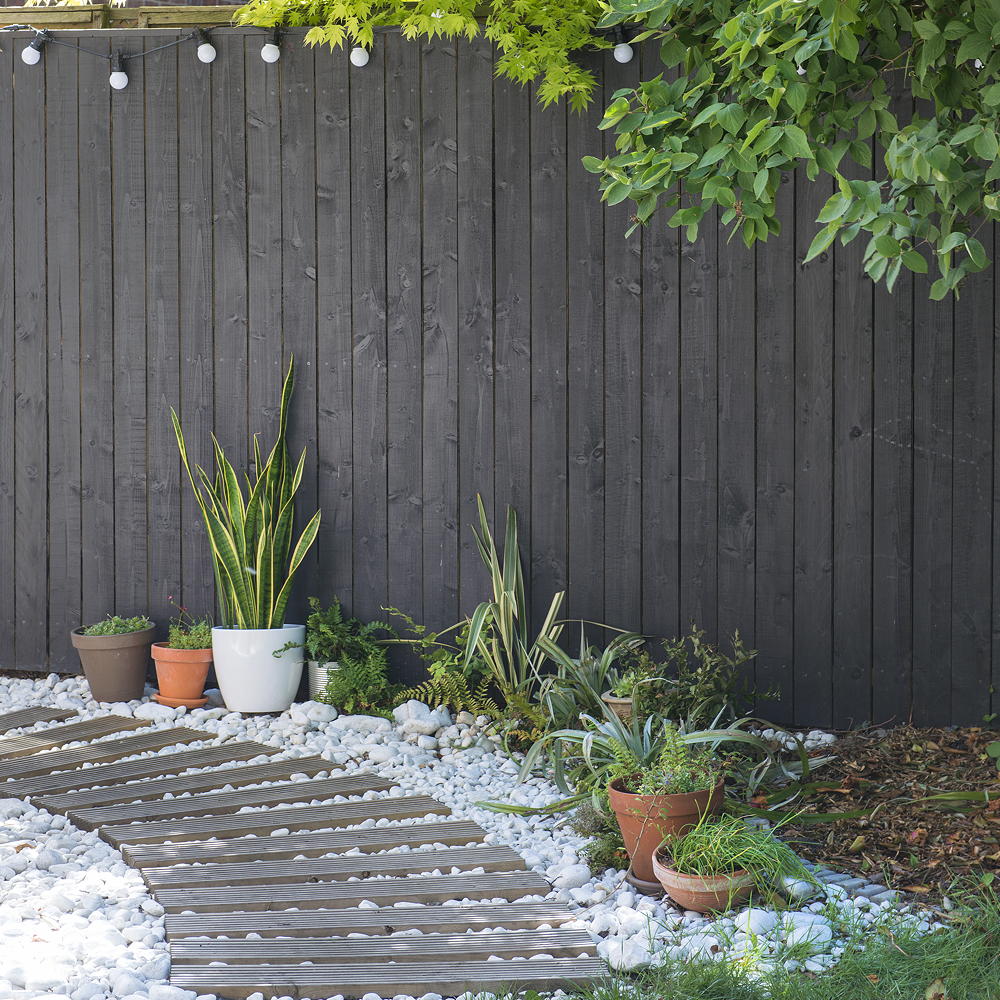
Another way to landscape your garden on a budget is to use a mix of decking boards and gravel or pebbles to form a wide path. This method is super versatile, and can cover a multitude of sins, from uneven terrain to an ugly concrete base.
15. Lay bricks that meander to your door

While it's not a yellow brick road that leads to the kingdom of Oz, this winding red brick path is just as charming. It adds a lovely whimsical feel to country front garden ideas. The subtle orange tones create a statement while blending in with the brickwork of the house.
FAQs
What is the cheapest way to lay a garden path?
In terms of material, gravel is one of the cheapest ways to lay a garden path. 'Gravel paths are affordable and easy to install so make a great cost-effective option,' says Holly from Garden Street.
'Wood chips or bark are also inexpensive and environmentally friendly, great for informal garden paths and providing a natural look.'
'It's also possible to saving on garden landscaping costs and build a garden path for next to nothing if you are willing to a bit cheeky,' says Ideal Home Contributor Amy Cutmore. 'I managed to spend less than £10, yet now have a beautiful walkway in my front garden.'
'My first step was to pop a message on my local village Facebook group, asking if anyone had any old house bricks going spare. I was thrilled – and taken aback – by the positive response, and collected hundreds of free bricks from locals eager to ditch them.'
'Granted, lots of them were covered in dirt and paint, but after a good hose down with a pressure washer, they looked great – not perfect, but rustic, exactly the look we were going for. I then dug out a route for the path, laid some ground cover sheeting to stop any weeds from growing up (our only major outlay), and put the sharp sand on top.'
'Even the sand was donated by a local builder, who had it left over from a project. He was driving by, saw what we were doing and dropped it off on the spot!
'I arranged the bricks in a pattern, filling the gaps between with the old gravel that had previously covered the entire front garden. We now have a pretty lawn, and an even prettier path!'
How deep should a garden path be?
The correct depth of a garden path will depend on the material you're using. 'For gravel paths, a depth of 7.5-10cm is typically recommended,' says Holly from Garden Street. 'For paving stones, dig to a depth of around 15-20cm to accommodate the sub-base, sand and paving slabs.
'Concrete paths usually require a depth of 10-15cm for the concrete itself, plus a similar depth for the sub-base.
'If you're thinking about laying bark or wood chip paths, go for a depth of around 5-7.5cm for a comfortable walking surface.'
Which garden path ideas will you be using in your outdoor space?

Amy Cutmore is an experienced interiors editor and writer, who has worked on titles including Ideal Home, Homes & Gardens, LivingEtc, Real Homes, GardeningEtc, Top Ten Reviews and Country Life. And she's a winner of the PPA's Digital Content Leader of the Year. A homes journalist for two decades, she has a strong background in technology and appliances, and has a small portfolio of rental properties, so can offer advice to renters and rentees, alike.
- Sophie KingGardens Editor
-
 Should your front door colour match your hallway? Interior experts reveal 3 reasons why it should (and 3 reasons it shouldn't)
Should your front door colour match your hallway? Interior experts reveal 3 reasons why it should (and 3 reasons it shouldn't)Are you team matching or contrasting?
By Ellis Cochrane
-
 This £200 limited-time discount makes this Dyson vacuum cheaper than I’ve ever seen it - run don’t walk to Argos for this bargain
This £200 limited-time discount makes this Dyson vacuum cheaper than I’ve ever seen it - run don’t walk to Argos for this bargainIt's the most affordable Dyson on the market right now
By Lauren Bradbury
-
 Martin and Shirlie Kemp’s pastel flower beds has given their Victorian renovation a romantic look - how you can get the look
Martin and Shirlie Kemp’s pastel flower beds has given their Victorian renovation a romantic look - how you can get the lookTheir pastel garden is the cottage garden inspo you've been looking for
By Kezia Reynolds
-
 I’m seeing pastel garden furniture at all my favourite brands this spring, but QVC’s sorbet collection impressed me the most
I’m seeing pastel garden furniture at all my favourite brands this spring, but QVC’s sorbet collection impressed me the mostFresh pastel shades are a great way to liven up your outdoor space
By Kezia Reynolds
-
 I spent the afternoon looking through Wayfair's garden sale – these are the 6 pieces I'm buying immediately for summer
I spent the afternoon looking through Wayfair's garden sale – these are the 6 pieces I'm buying immediately for summerThese are my must-have garden buys from the sale
By Holly Reaney
-
 I’ve found the perfect alternative to John Lewis’ sold-out striped garden chair – and you won’t believe where it's from
I’ve found the perfect alternative to John Lewis’ sold-out striped garden chair – and you won’t believe where it's fromJohn Lewis' Sling Garden Chair is one of the most stylish pieces of garden furniture I'd seen – until I tracked down this QVC lounge chair...
By Kezia Reynolds
-
 Lidl is selling a smart tiered planter that will unlock extra planting space in a tiny garden or balcony
Lidl is selling a smart tiered planter that will unlock extra planting space in a tiny garden or balconyWhy I've been eyeing this planter up for my tiny garden
By Kezia Reynolds
-
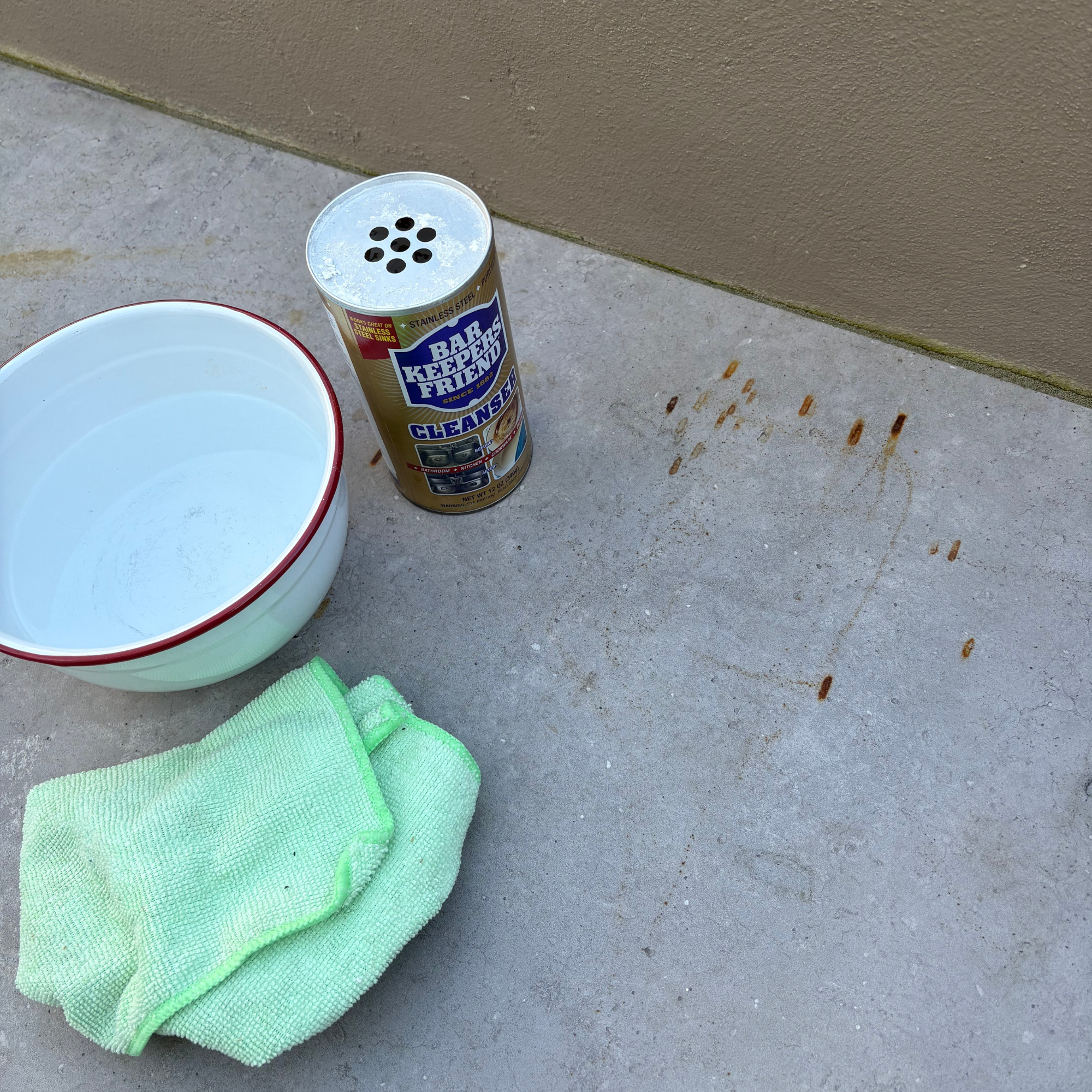 I’ve found the best solution for cleaning stains from a patio - and it’s only £8 on Amazon
I’ve found the best solution for cleaning stains from a patio - and it’s only £8 on AmazonThe stains practically vanish!
By Kezia Reynolds
-
 Lidl’s £15 sun sail is everything you need to create a shady oasis in your garden – and it’s on sale right now
Lidl’s £15 sun sail is everything you need to create a shady oasis in your garden – and it’s on sale right nowWith two stylish colours available, the sun sail will make a chic yet practical addition to any of your garden.
By Kezia Reynolds
-
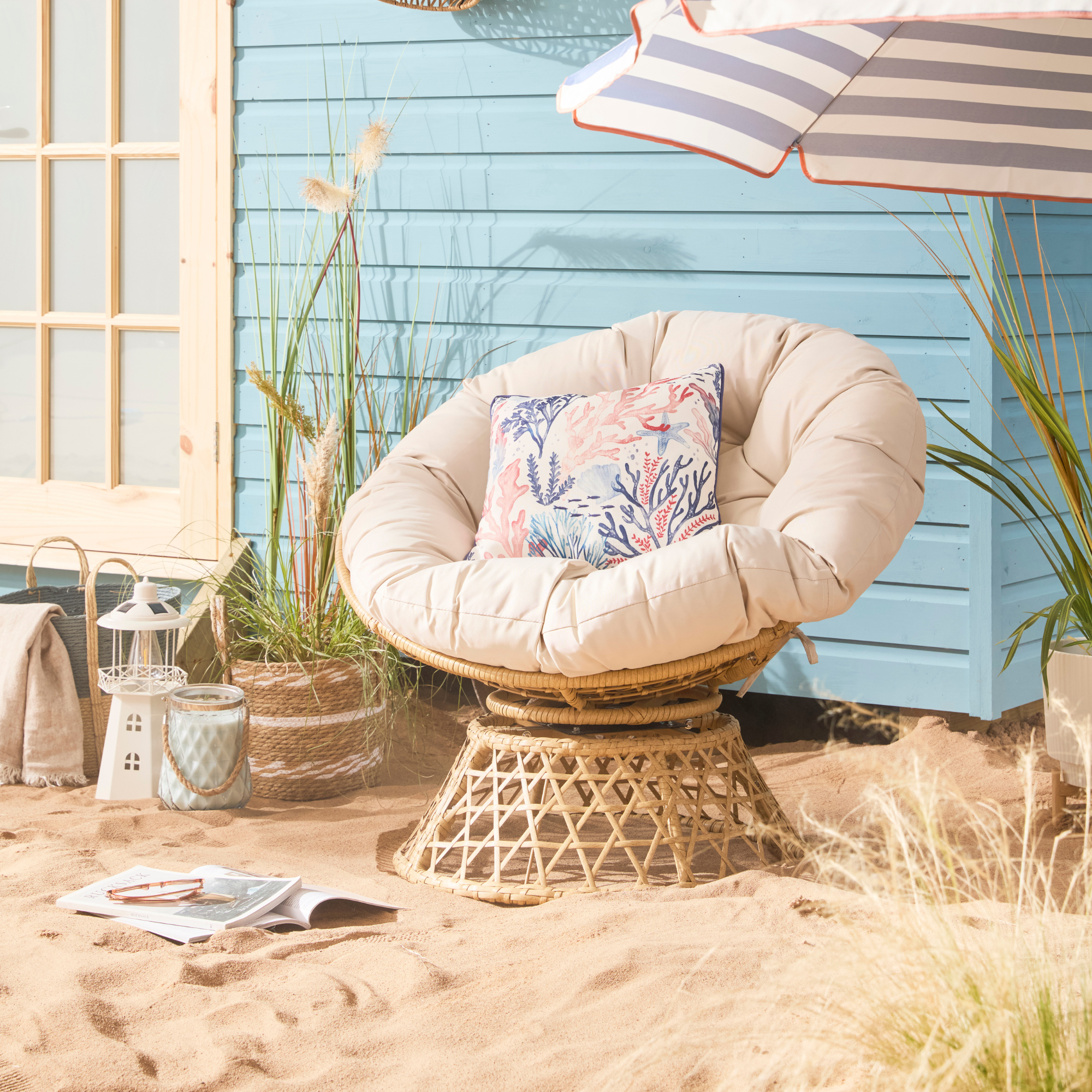 B&M has nailed 2025's breakout garden furniture trend - it's one of the most affordable and stylish I've seen
B&M has nailed 2025's breakout garden furniture trend - it's one of the most affordable and stylish I've seenGet the luxe look for less
By Kezia Reynolds
-
 I was shocked to discover a treasure-trove of designer-look garden furniture at La Redoute on sale right now – 6 chic standouts
I was shocked to discover a treasure-trove of designer-look garden furniture at La Redoute on sale right now – 6 chic standoutsGive your garden that high-end look
By Sara Hesikova
